ChromoTek Nano-Traps
The gold standard in immunoprecipitation
Nano-Traps are the ready-to-use affinity beads for IP that allow for fast and reliable, single-band pulldowns of even low abundance proteins.
-
No contaminating heavy & light antibody chains or binding proteins
-
Short Incubation Time (30-60 mins)
-
High affinity pulldowns of even low abundance proteins
-
Lowest background in class
-
Stable under stringent washing conditions
-
Recombinant Expression
-
No contaminating heavy & light antibody chains or binding proteins
-
High affinity pulldowns of even low abundance proteins
-
Stable under stringent washing conditions
-
Short Incubation Time (30-60 mins)
-
Lowest background in class
-
Recombinant Expression
All Nano-Traps
Solubility Tags |
Formats |
|---|---|
| GST-Trap | Agarose |
| MBP-Trap | Agarose |
Low background, no extra bands & high specificity will improve your pulldown assay significantly.
Immunoprecipitation (IP) of a protein of interest (POI) using Nano-Traps (left) compared with a conventional antibodies coupled to Protein A/G beads (right). When using Nano-Traps, the amount of immunoprecipitated POI is higher and the background is reduced in comparison to an IP conducted with the conventional antibody. Nano-Traps also provide pure fractions of immunoprecipitated POI without contamination of heavy and light antibody chains.
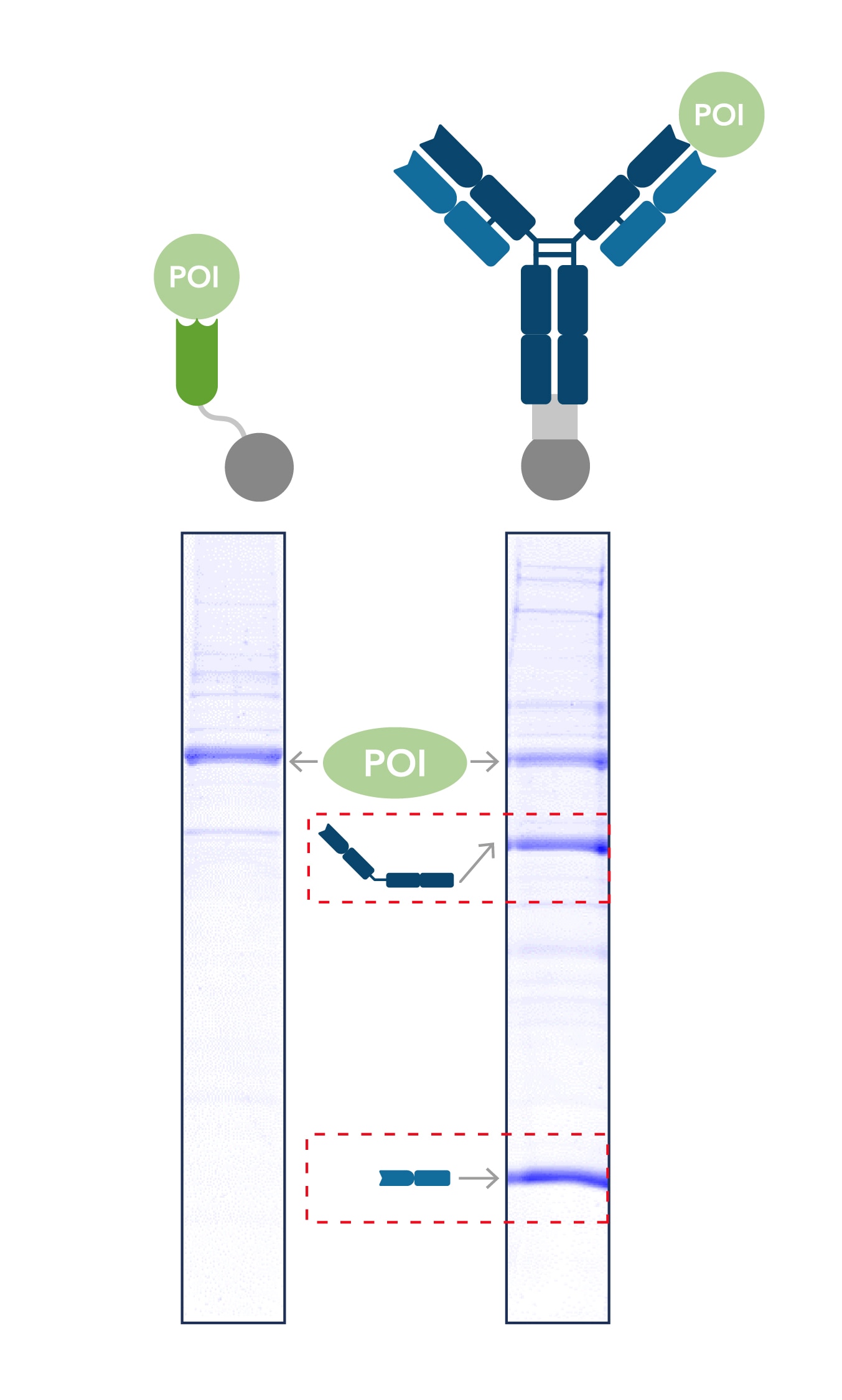
Nano-Traps are highly stable in contrast to conventional antibodies. Once bound to their target proteins, very stringent washing conditions can be applied to remove any unwanted proteins as well as reduce background. Additionally, Nano-Traps can also be used in the presence of virtually any lysis buffer, such more specialized ones needed for ubiquitination assays or phosphorylation studies.
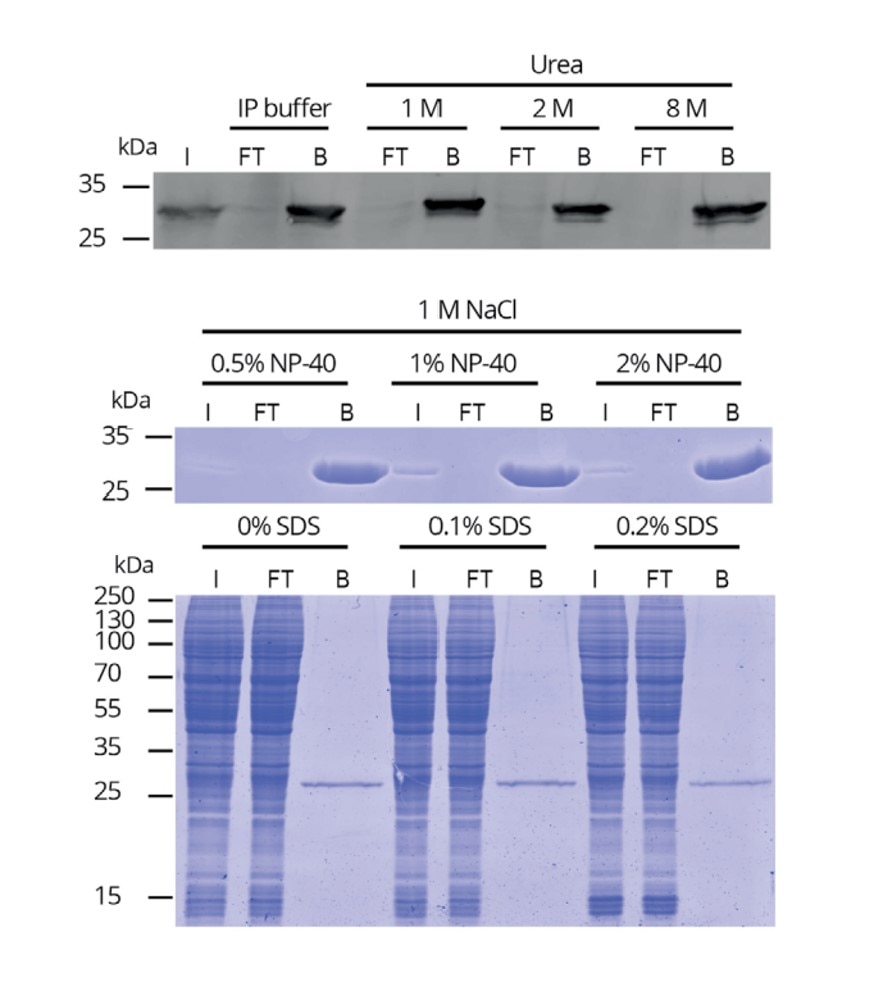
Analysis of GFP-Trap buffer compatibility. The GFP-Trap is compatible with common wash and lysis buffers, including those with high concentrations of NaCl, NP-40, SDS, and Urea. No matter the wash condition, GFP-tagged proteins remain bound to trap, which no protein remaining in the flow-through fraction.
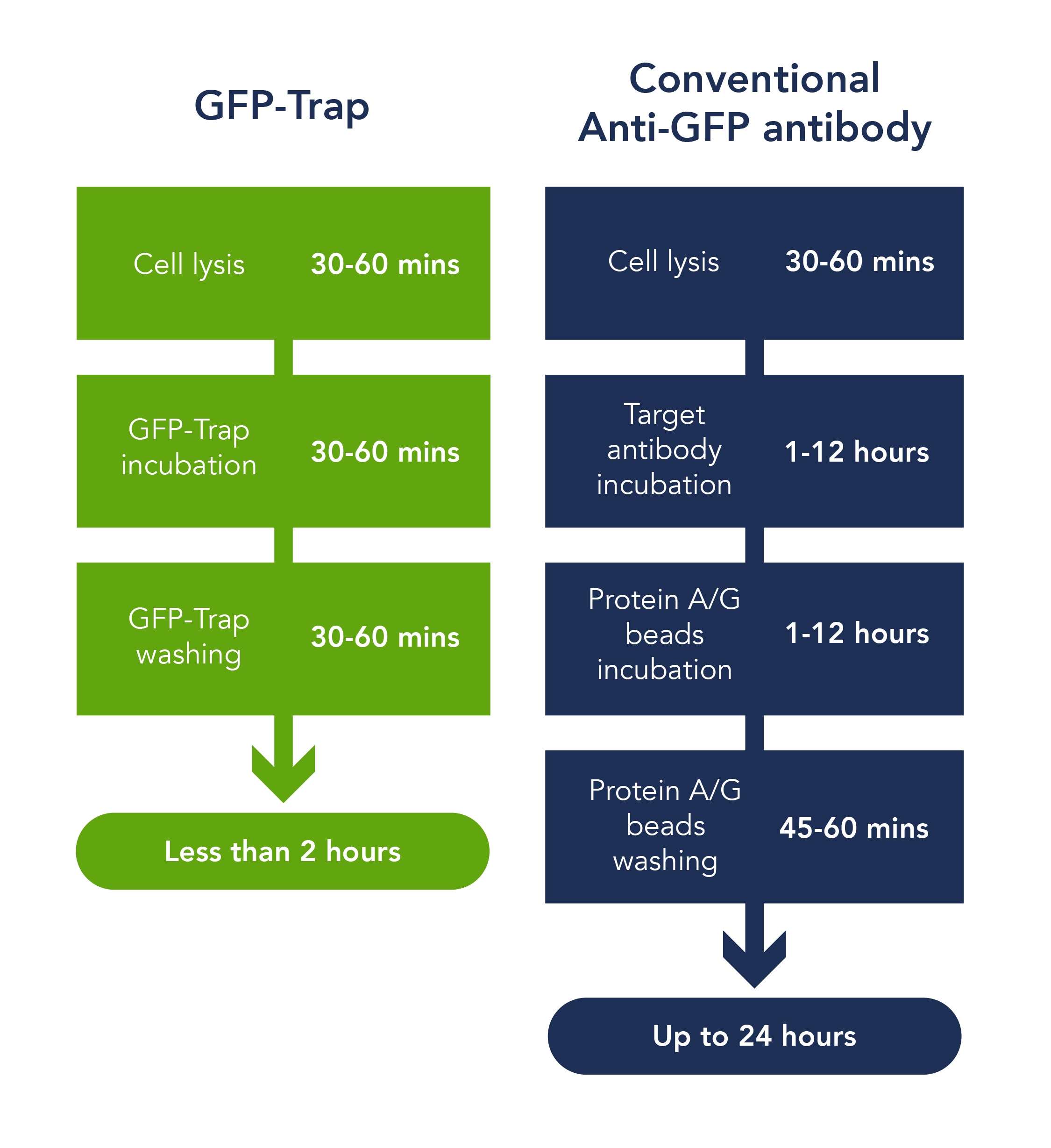
Nano-Traps are ready-to-use, with the nanobody pre-conjugated to beads. This significantly speeds up the IP workflow with no pre-incubation necessary and pulldowns completed within 60 minutes
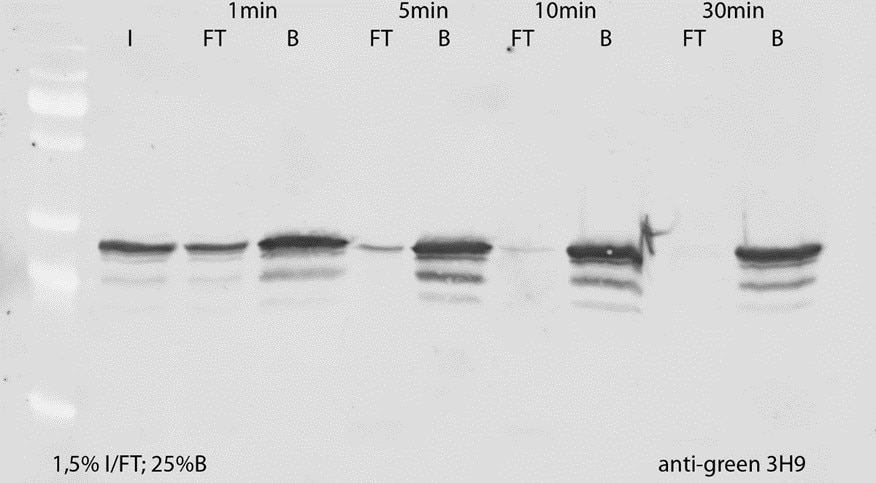
Time-course pulldown of GFP-tagged proteins using GFP-Trap. Most tagged-proteins are bound by the trap within 5 minutes with all protein being captured by 30 mins.
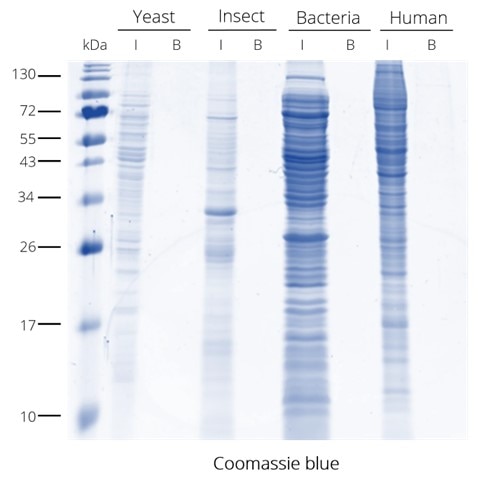
IP from different cell lysates without V5-tagged proteins using V5-Trap. The V5-Trap has remarkably low background with no non-specific binding seen in the bound fraction.
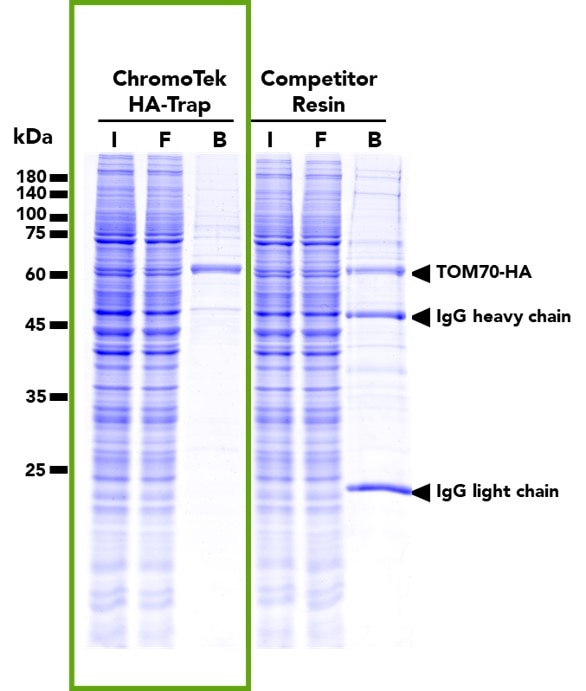
Pulldown of TOM70-HA fusion protein from transfected HEK293T cells using either HA-Trap (left) or a competitor resin (right). Pulldowns with HA-Trap result in far cleaner, single-band pulldowns with significantly less artifact binding compared to the competitor product.
There is a built-in discount when scaling up to our 200- and 400- reaction sizes. You can save nearly 25% when purchasing in bulk. Our recombinant expression system ensures the supply of even larger quantities upon request.
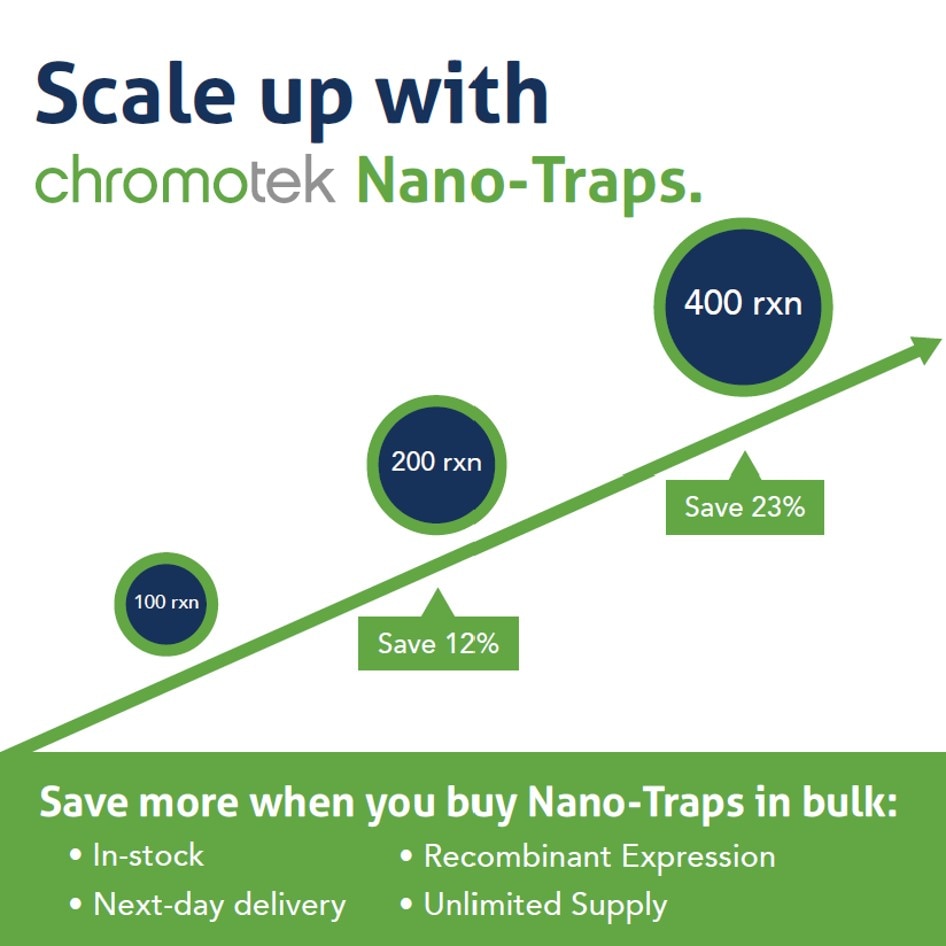
Articles
Which GFP-Trap should I use for my immunoprecipitation?
The GFP-Trap consists of the ChromoTek anti-GFP Nanobody/ VHH that is coupled to 3 different types of beads or is immobilized in a 96 multiwell plate.
Non visible textThe best anti-GFP antibody for immunoprecipitation
GFP-Trap consists of an anti-GFP VHH (green circle), derived from camelidae (alpaca, llama, camel, dromedaries, etc.) heavy chain antibodies. The anti-GFP...
Non visible textWhy is the Fab-Trap™ so Fab-ulous?
The Fab-Trap™ is an IP reagent based on a Fab-fragment of a conventional antibody that is covalently coupled to Agarose beads. Fab-Traps™ offer several advantages in IP...
Non visible textGreen fluorescent protein (GFP) in plant research
GFP is increasingly being used as a universal reporter in plant biology from the cellular to whole plant level:...
Non visible textMyc-Trap for IP and affinity purification
Myc-Trap’s performance has been optimized for immunoprecipitation (IP/Co-IP) and affinity purification of Myc-tagged proteins...
Non visible textVirus research using GFP
The interaction between the Nanobody and GFP is extraordinarily stable and efficient. This allows using cell lysate originating from many different organisms that require a multitude of different IP conditions...
Non visible textWhich GFP-Trap should I use for my immunoprecipitation?
The GFP-Trap consists of the ChromoTek anti-GFP Nanobody/ VHH that is coupled to 3 different types of beads or is immobilized in a 96 multiwell plate.
Non visible textThe best anti-GFP antibody for immunoprecipitation
GFP-Trap consists of an anti-GFP VHH (green circle), derived from camelidae (alpaca, llama, camel, dromedaries, etc.) heavy chain antibodies. The anti-GFP...
Non visible textWhy is the Fab-Trap™ so Fab-ulous?
The Fab-Trap™ is an IP reagent based on a Fab-fragment of a conventional antibody that is covalently coupled to Agarose beads. Fab-Traps™ offer several advantages in IP...
Non visible textGreen fluorescent protein (GFP) in plant research
GFP is increasingly being used as a universal reporter in plant biology from the cellular to whole plant level:...
Myc-Trap for IP and affinity purification
Myc-Trap’s performance has been optimized for immunoprecipitation (IP/Co-IP) and affinity purification of Myc-tagged proteins...
Virus research using GFP
The interaction between the Nanobody and GFP is extraordinarily stable and efficient. This allows using cell lysate originating from many different organisms that require a multitude of different IP conditions...
Non visible text